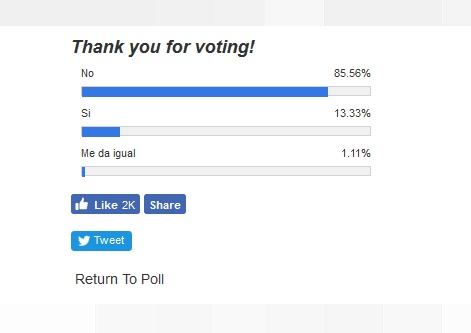The federal government set aside funding for a new Puerto Rico status vote in 2014. It was the responsibility of then-governor Alejandro Garcia Padilla to make sure the referendum took place. It didn’t happen. One of the reasons for this is that the “commonwealth” party wanted some kind of “commonwealth” option on the ballot. The U.S. Department of Justice must, according to the law that set aside the funds for this vote, agree that all options on the ballot are constitutional under the U.S. Constitution. “Enhanced Commonwealth,” the Department of Justice has already said, is not one of the possible options.
Obviously, this created a problem for the “commonwealth” party. They spent many months trying to come up with a definition of “enhanced commonwealth” that they could all agree on, in hopes of persuading the U.S. government to agree with them. They did not succeed.
The new governor plans to hold the new plebiscite in 2017. He wants to include statehood and independence as options on the ballot. The Department of Justice has already agreed that both these options are valid and acceptable. Others have proposed an up or down vote on statehood, and this also was accepted as a possibility under the U.S. Constitution.
Disenfranchised?
Garcia Padilla was not willing to accept either of those options. He said that having just those two options would “disenfranchise” the people who wanted to vote for a “commonwealth” option. “Disenfranchise” means to refuse to allow someone to vote. In presidential elections, for example, the 3.5 million U.S. citizens living in Puerto Rico are disenfranchised: they are not allowed to vote.
“Disenfranchised” doesn’t mean that someone’s choice is not on the ballot. People who want to vote for an “enhanced commonwealth” option aren’t disenfranchised when it isn’t on the ballot, any more than people who want tutti-frutti are disenfranchised when a menu includes only chocolate and vanilla ice cream.
Rep. Don Young of Alaska, one of the most recent territories to become a state, said after the November 14, 1993, plebiscite that “the people were presented a mythical commonwealth option which proposed significant changes to the current relationship between Puerto Rico and the United States.” He went on to say, “It is unfortunate that the voters have faced unrealistic and inflated expectations of a supposed commonwealth relationship with the United States. However, this has become an opportunity to set the record straight; to quell the commonwealth fantasy status which continues to be promoted to the detriment of the society it is purported to help.”
Even though the “commonwealth” option was on the ballot in 1993 and people voted on it, there was never any chance that Congress would act on that vote. The choice the people made was unconstitutional. There is no point in asking people to vote on options that they can never have. In fact, you might call that disenfranchisement, since it wastes the votes of people who make that choice.
The 2012 vote
In 2012, another plebiscite was held in Puerto Rico. Statehood won. However, the “commonwealth” supporters called the result into question by pretending that the “commonwealth” option was on the ballot. By imagining that there was a tacit “commonwealth” option and that many people had voted for it, they were able to stir up enough controversy that Congress once again ignored Puerto Rico’s vote.
The new vote is supposed to make sure that this doesn’t happen again. Some of the funds for the vote will be used for voter education, to make sure that everyone understands that “enhanced commonwealth” is not on the ballot, and that voting for it will be impossible.
But some people may still be wondering: do the people of Puerto Rico actually want a “commonwealth” option? Fortunately, Notiuno.com has taken a poll. The one question is shown above: “Should ‘commonwealth’ be on the ballot for the upcoming status vote?”
People are still voting, but the results look pretty clear:

86% of voters so far say that it should not be on the ballot.
They’re right. The U.S. government has already declared that it cannot be on the ballot. The elected leadership in Puerto Rico is not asking for it. And the people do not want it.
The 2017 vote
The ballot for 2017 will include two choices: statehood or independence. If independence wins, there will be a second vote to determine whether Puerto Rico should be an independent nation or an independent nation in Free Association with the United States.
Free Association means that the United States and the nation of Puerto Rico would negotiate an agreement — which either side could end at any time. No Free Associated State has U.S. citizenship for its people. None has guaranteed future financial support from the United States. Some of the “commonwealth” party leaders are currently trying to make Free Association sound a lot like enhanced commonwealth, but this is dishonest. The United States government has said very clearly that it will not agree to that arrangement. Puerto Rico has refused the current territory status. 54% voted against it in 2012, and the leaders of the “commonwealth” party have denounced it as a “colonial” relationship.
Puerto Rico’s choice will be between statehood and independence.







2 Responses
Free Association Is Better No Statehood
All U can eat Buffett for $3.99 and free Beer included ! Thats what the PPD wants. STATEHOOD is the way !